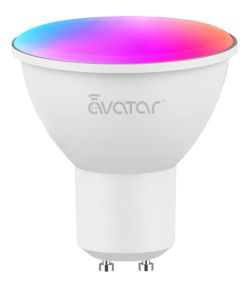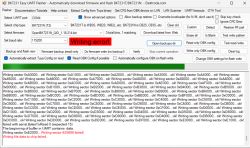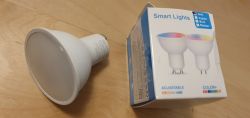Hello everyone,
I am currently carrying out a major refurbishment of a large detached building - ~370m2, 4 storeys.
The contractor is about to lay the installation. This is the last moment for final decisions on the Smart Home. Delving into the subject raises further questions and doubts. But one step at a time:
1. I will be doing the system in terms of coarse works by the contractor. He has good electricians, but the subject of SH is rather magic for them. I want to create the system in terms of design, logic and installation of the target, lighter devices myself, because: a) I like such things, thousands of trial and error and failures for the final beautiful result, b) the house is a bit special, lots of mezzanines, mezzanines etc. so a lot of elements can only be configured in the finished house, a service technician will be needed on site non-stop, so ideally it should be me , c) it will definitely be cheaper that way, and if you can do it yourself and cheaper, I like to do it myself and cheaper.
, c) it will definitely be cheaper that way, and if you can do it yourself and cheaper, I like to do it myself and cheaper.
2. as for the soft layer I am convinced for Home Assistanta, because again - cheaper, because I like Android/Google and I already use Google Assistant heavily. Plus it seems to be the most flexible system. There's always a code somewhere to post something - so Roomba, Samsung FH, etc. Although controlling all the gadgets from one app is more of a fiddly thing for me - the icing on the cake, albeit a welcome one.
3. as for the hard layer, I would VERY much prefer to rely on a star-shaped house power system to a central switchboard and avoid wireless solutions. The building has some thick load bearing walls, also inside, concrete ceilings, plus it is in a city. So there is a lot of radio pollution. 2 colleagues have wireless solutions and yet they are not reliable. And since the whole installation is being done from scratch anyway, laying coils of cable is not a big problem. And here is the key point - for aesthetic reasons, I would very much like to have freedom of choice in the selection of sockets and switches, so I would like to remove all logic to the control room. Ordinary sockets, bell switches.
3 What is the system supposed to do? As I mentioned, the interior layout is quite unusual, the lighting will be quite complex and absolute flexibility in its application is advisable. In practice, I dream of a system with a limited number of bell switches, where with these switches I can freely determine the elements I need - i.e. single click, double click, triple click, short hold, long hold, etc. For example - a switch near the bed - I click briefly, turn off my wall lamp over a book, double click - turn off the whole bedroom after my wife's wall lamp, hold 2 sec - the whole house goes into night mode. Of course, voice control, motion sensors, control with an app - I like all of these too and may use them, but this fixation of mine on controlling all the ringer switches really does matter.
Key issues: what relays to use to control lights and sockets that will work with HA and accept clicks and extended clicks. There is little information on the internet on this subject. Apparently Fibaro offers such functionality, but the feedback on their forum is that it works on average. I would like some kind of group relays, like one expandable model which will control everything in the control room conducted by HA, I can't imagine installing hundreds of Sonoffs because it's absurd. Also - I would like on cables, not WiFi. From these questions comes the question of installation. I assume that the standard 3x2.5 for the sockets and 3x1.5 for the switches and lighting points will suffice.. The question is whether to also pull twisted-pair cable where you can (there will be an Ethernet socket in every room, so there will be one anyway).
5 Failover mode. I care about redundancy. HA runs locally, so already a plus, but still can't rule out something burning up in there. I'm thinking of a special switch that group changes (purely electromechanically, not electronically) the connections in the control room so that the sockets get raw 230V and the bell switches light up the key lighting points in their surroundings, at the same time disconnecting all this from the SH automation. Obviously such a switch would have a transitional position cutting everything off, Or perhaps there are relays for lighting/socket control that have such a function already built in, i.e. some physical 'button' that bypasses most of the electronics and throws in some emergency 'default' mode?
In summary, I get the impression that Home Assistant is rather dedicated to distributed wireless solutions, rather than centralised installations where everything is controlled in one place and, as far as possible, over cables.... Please correct me .
.
I am currently carrying out a major refurbishment of a large detached building - ~370m2, 4 storeys.
The contractor is about to lay the installation. This is the last moment for final decisions on the Smart Home. Delving into the subject raises further questions and doubts. But one step at a time:
1. I will be doing the system in terms of coarse works by the contractor. He has good electricians, but the subject of SH is rather magic for them. I want to create the system in terms of design, logic and installation of the target, lighter devices myself, because: a) I like such things, thousands of trial and error and failures for the final beautiful result, b) the house is a bit special, lots of mezzanines, mezzanines etc. so a lot of elements can only be configured in the finished house, a service technician will be needed on site non-stop, so ideally it should be me
2. as for the soft layer I am convinced for Home Assistanta, because again - cheaper, because I like Android/Google and I already use Google Assistant heavily. Plus it seems to be the most flexible system. There's always a code somewhere to post something - so Roomba, Samsung FH, etc. Although controlling all the gadgets from one app is more of a fiddly thing for me - the icing on the cake, albeit a welcome one.
3. as for the hard layer, I would VERY much prefer to rely on a star-shaped house power system to a central switchboard and avoid wireless solutions. The building has some thick load bearing walls, also inside, concrete ceilings, plus it is in a city. So there is a lot of radio pollution. 2 colleagues have wireless solutions and yet they are not reliable. And since the whole installation is being done from scratch anyway, laying coils of cable is not a big problem. And here is the key point - for aesthetic reasons, I would very much like to have freedom of choice in the selection of sockets and switches, so I would like to remove all logic to the control room. Ordinary sockets, bell switches.
3 What is the system supposed to do? As I mentioned, the interior layout is quite unusual, the lighting will be quite complex and absolute flexibility in its application is advisable. In practice, I dream of a system with a limited number of bell switches, where with these switches I can freely determine the elements I need - i.e. single click, double click, triple click, short hold, long hold, etc. For example - a switch near the bed - I click briefly, turn off my wall lamp over a book, double click - turn off the whole bedroom after my wife's wall lamp, hold 2 sec - the whole house goes into night mode. Of course, voice control, motion sensors, control with an app - I like all of these too and may use them, but this fixation of mine on controlling all the ringer switches really does matter.
Key issues: what relays to use to control lights and sockets that will work with HA and accept clicks and extended clicks. There is little information on the internet on this subject. Apparently Fibaro offers such functionality, but the feedback on their forum is that it works on average. I would like some kind of group relays, like one expandable model which will control everything in the control room conducted by HA, I can't imagine installing hundreds of Sonoffs because it's absurd. Also - I would like on cables, not WiFi. From these questions comes the question of installation. I assume that the standard 3x2.5 for the sockets and 3x1.5 for the switches and lighting points will suffice.. The question is whether to also pull twisted-pair cable where you can (there will be an Ethernet socket in every room, so there will be one anyway).
5 Failover mode. I care about redundancy. HA runs locally, so already a plus, but still can't rule out something burning up in there. I'm thinking of a special switch that group changes (purely electromechanically, not electronically) the connections in the control room so that the sockets get raw 230V and the bell switches light up the key lighting points in their surroundings, at the same time disconnecting all this from the SH automation. Obviously such a switch would have a transitional position cutting everything off, Or perhaps there are relays for lighting/socket control that have such a function already built in, i.e. some physical 'button' that bypasses most of the electronics and throws in some emergency 'default' mode?
In summary, I get the impression that Home Assistant is rather dedicated to distributed wireless solutions, rather than centralised installations where everything is controlled in one place and, as far as possible, over cables.... Please correct me






